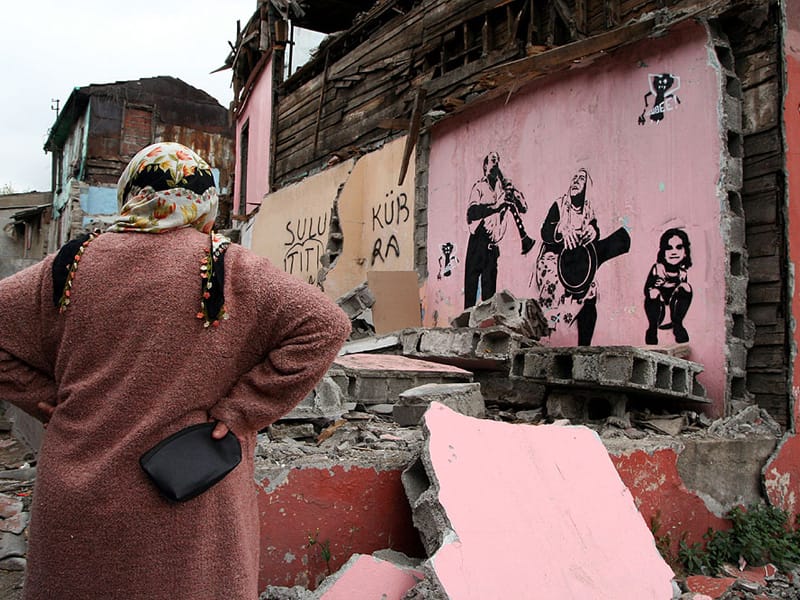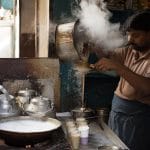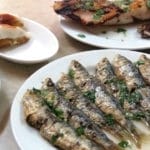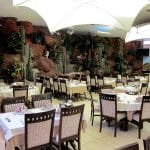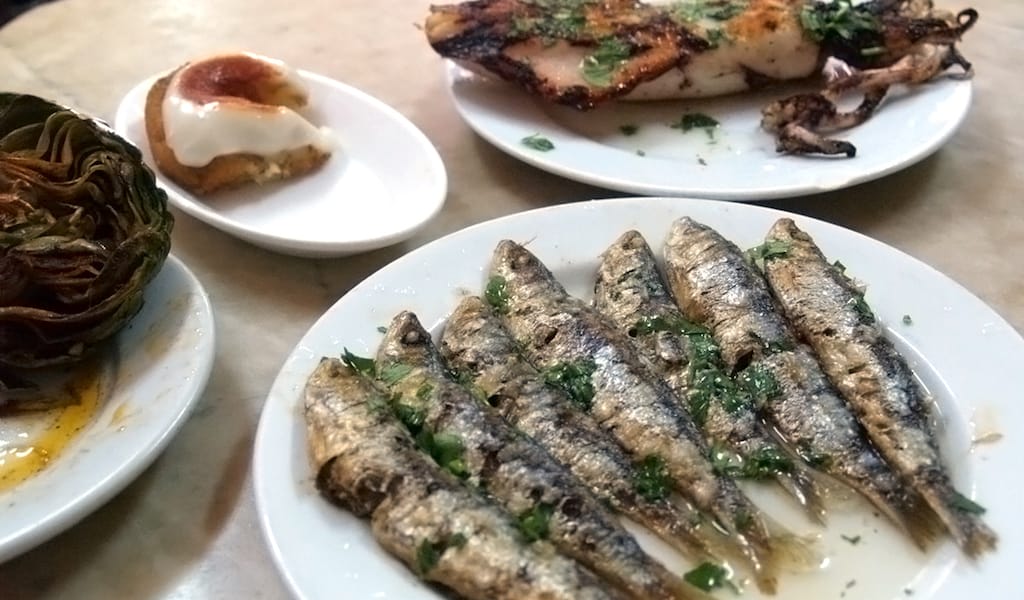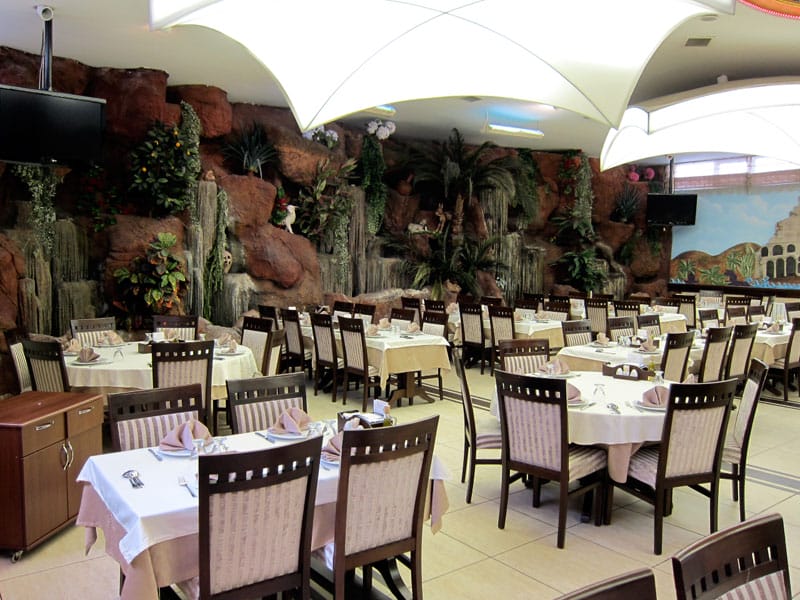Update: Simsek Pide Salonu is sadly no longer open.
There’s nothing like a debate about “urban renewal” – often touted by municipal governments as a way to repurpose run-down urban areas for gentrification – to work up a good appetite. In a city like Istanbul, a teeming metropolis of 15 million people working to build a modern life among ancient ruins, these discussions seem to occur on every corner.
These days, construction cranes and skyscrapers now crowd a skyline better known for its domes and minarets. As the municipality’s digging machines makes Swiss cheese out of the seven hills upon which Istanbul is built, residents are left wondering what good the resulting traffic tunnels will do when the big earthquake hits. The architectural legacies of the Byzantines and Ottomans have suffered heartbreaking defeats to modernization, including the destruction of the very skin of Istanbul – the Old City walls – parts of which were cleared for a commuter train. But despite these losses, the city remains a vibrant overlay of the old and new where many places seem either just on the cusp of being torn down or of being saved for restoration. Development, for better or worse, moves at a dizzying clip; the situation changes every day, sometimes drastically.
Lately, certain urban renewal projects have begun to encroach on some of our favorite dining zones, and we have become concerned that a dining culture currently comprised of small individual businesses may be rejected by the new master plan for Istanbul. While some restaurants are more at risk than others, corporate redevelopment would appear to be a direct threat to the esnaf way of life and to the small-scale dining establishments that serve these tradesmen. The areas below – and our favorite lunch spots found in them – are all worth exploring before it’s too late.
Taksim Square
Few places in Turkey are as symbolic of Turkish nationhood as Taksim Square. At the foot of the statue of Atatürk in the square, every stripe of society, from Communists to headscarved students, Kurdish mothers of the missing to ultra-nationalist “grey wolves,” voices its concerns en masse. We witnessed a march of thousands file peacefully into the square in opposition to the country’s involvement in America’s war in Iraq, and it worked. We attended a vigil to the Armenian journalist Hrant Dink, who was murdered in front of his office. There seems to be a direct line to the core values of the nation right in Taksim Square; like Arizona’s Sedona vortex, it’s sacred space – in a secular way, of course.
The Taksim redevelopment project du jour seeks to build subterranean traffic tunnels and bus stops, rebuild the (long ago demolished) Ottoman barracks over a park, and redesign the whole aboveground area. Needless to say, there 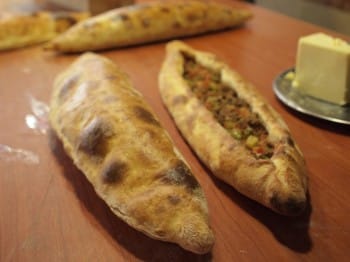 is strong local opposition, both to the practical nature of the design but also for symbolic reasons (the plans include the construction of a large mosque).
is strong local opposition, both to the practical nature of the design but also for symbolic reasons (the plans include the construction of a large mosque).
Right in the center of all of this is Şimşek Pide Salonu, one of our favorite places to eat Black Sea pide. We recommend stopping in and getting one of these pide before it’s too late. Our current favorite, the kavurmalı, comes closed – like a foot-long calzone – and filled with soft chunks of preserved beef; its crispy shell is lathered in butter. [Editor’s note: We regret to report that Şimşek Pide Salonu has closed.]
Tarlabaşı
Many have wondered: How could a neighborhood as central as Tarlabaşı, just steps from Taksim Square, remain a run-down area of dilapidated houses inhabited by Eastern Anatolian migrants – often labeled ne’er-do-wells – who string their laundry over the street? The answer is: it can’t!
After a stalled start, the Tarlabaşı redevelopment project is well underway, simultaneously demolishing evacuated buildings and selling yet-to-be-built edifices as Grade A commercial real estate. (For more information, check out Tarlabaşı Istanbul, a site chronicling what’s happening to the neighborhood.)
We recommend visiting the Tarlabaşı market, held weekly on Sundays. Right at the entrance of the market is a pushcart selling lavaş and an excellent buttery, flaky flatbread called katmer. While katmer is a name used for many baked flatbreads, this katmer is special, and tearing away at it as we shop for produce in the market streets has become a Sunday ritual for us. Yöremiz Pide, the bakery where this katmer is made, is dangerously close to the Tarlabaşı demolition zone and will surely not survive the next round.
Fener/Balat/Ayvansaray
For us, Fener, Balat and Ayvansaray, three historic residential neighborhoods strung along the Golden Horn, are some of the best places to explore the way this city lives within the Old City. Rich in historical sites – such as the Orthodox Patriarchate, the only Byzantine-era church still in operation, old synagogues, hammams and Ottoman residential architectural treasures – these areas also have street life and bustling markets that offer a glimpse into humble neighborhoods with a vivid history.
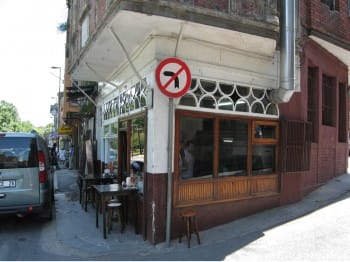 Luckily, in summer 2012 the “Hands Off My House” movement won a court decision to save the area. The movement had fought a municipal development project that called for the bulldozing of nearly the entire front row of homes (many of them registered historic property) to make way for massive redevelopment.
Luckily, in summer 2012 the “Hands Off My House” movement won a court decision to save the area. The movement had fought a municipal development project that called for the bulldozing of nearly the entire front row of homes (many of them registered historic property) to make way for massive redevelopment.
To celebrate this victory, we suggest a plate of köfte at Köfteci Arnavut, a Balat institution that surely would not have survived the project. These meatballs are utterly homemade and delicious, served up by the İştay family since the 1940s in a lovely old building. (Read Culinary Backstreets’ review of Köfteci Arnavut here.)
But let’s not count our köfte just yet. As one Fener resident warned us, “Just because we won the case doesn’t mean they won’t do [the redevelopment] anyway.”
Published on October 19, 2012
Related stories
January 19, 2015
DelhiThe official cold blew in last month. Winds pierced thick cotton clothing through to the skin, into the body and further into the bone while we were driving in the open rickshaw, after the sun slipped down. Then it rained and thundered, the kind that makes one jump with the clap. When the morning air…
June 17, 2013
BarcelonaOpened in 1944, La Cova Fumada (“The Smoked Cave”) is one of the most beloved gastronomic icons in Barcelona’s port area. Every day, people from all over the city come here to enjoy the powerful charms of the smell of fried fish, the spicy bite of their original “potato bombs” and the warmth of the…
July 2, 2013
IstanbulIn our imaginary primetime lineup, a reality show called “Pimp My Kebab Salon” transforms a drab kebab shop into a grill palace suited to the tastes of the latter-day sultans. Surfaces are suddenly gilded in gold, fountains appear and everything is reupholstered under the watchful eye of the boisterous host with tacky taste. If this…







































